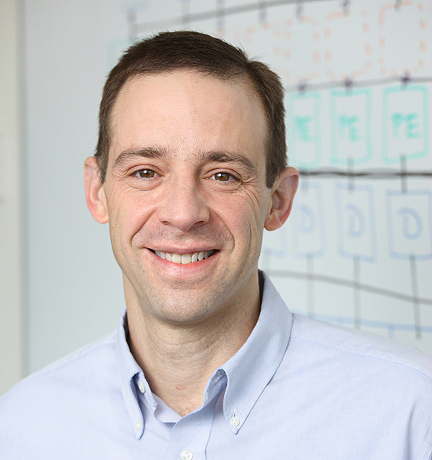In computer science, the milestones of a decade ago can seem like ancient history. In 2003, the fastest supercomputer had a peak speed of 36 teraflops, or trillion floating point operations a second. This year, the Chinese Tianhe-2 supercomputer achieved a record 34 quadrillion floating point operations a second, or petaflops – almost 1,000 times faster.
Change of this magnitude follows Moore’s Law. In 1965, Gordon Moore, the cofounder of Intel, predicted that ever-smaller transistors would enable the semiconductor industry to double computing power every 18 months. Moore’s estimate proved remarkably durable. However, because chip makers are approaching the physical limits of miniaturization, it is likely that Moore’s Law will begin to falter at the end of this decade.
To maintain the pace of change, computer scientists must focus on strategies besides miniaturization. That’s the mission of the newly created Center for Future Architectures Research, or C-FAR, which includes professor Kevin Skadron, chair of the Department of Computer Science in the University of Virginia’s School of Engineering and Applied Science, among its members.
Mapping the Next Generation of Computer Architecture
C-FAR is funded by a five-year, $28 million grant from the Semiconductor Research Corporation, a nonprofit collaboration of government agencies, leading semiconductor companies and industry trade associations. It is one of six Semiconductor Technology Advanced Research Network centers that the corporation recently created to guide the field through the approaching sunset of Moore’s Law. C-FAR is led by investigators at the University of Michigan and includes top researchers from 14 other institutions.
The center’s researchers are focusing on developing computer systems architectures to address three interrelated challenges. They will design architectures that make it possible for computers to handle massive data sets more efficiently. They will also ensure that new architectures exploit the benefits of emerging technologies, such as three-dimensional stacked chips and novel memory technologies such as phase-change memory. And they will develop architectures that enable parallel computing among different, or heterogeneous, chips.
Currently, most multicore chips consist of identical processors, although we are starting to see graphics processors integrated with central processor units in personal computers and accelerator units added to mobile-phone and tablet chips. In the future, these multicore chips will consist of much more diverse combinations of processors, so that the chips can be optimized for specific tasks.
Positioning U.Va. at the Heart of Change
Skadron and his colleagues at U.Va. will be concentrating primarily on the last of these three objectives.
“My group will be collaborating with others in the center to develop a new architectural paradigm for fine-grained heterogeneous computation,” Skadron said. “This will first require understanding the tradeoffs with respect to performance, energy, resiliency and flexibility.”
To reach this understanding, Skadron will devise new techniques for modeling temperature, power and reliability. His laboratory has a strong track record in exactly the sort of modeling needed and is widely recognized, for instance, for its “HotSpot” thermal modeling tool, developed with professor Mircea Stan, Skadron’s colleague in the Department of Electrical and Computer Engineering.
Skadron is also an expert in graphics processor units, or GPUs. Skadron’s group will leverage and extend its widely used Rodinia suite of benchmarks for graphics processors to help guide the development of this new architecture.
At the same time, Skadron will be working on the new programming tools that heterogeneous architecture will require.
“The way you program and access data is different with a GPU than a traditional CPU,” he said. “Manually bridging the two methods is time-consuming. Our challenge is to come up with abstractions that can be applied to common cases and that would manage the conversions automatically.
“C-FAR is very much an elite group, so it is an honor to be included in the center,” Skadron continued. “I believe it may lead to a number of opportunities for our students and for the department.”
For postdoctoral and graduate students, membership in C-FAR provides the chance to interact with the top minds in the field and work on problems that are larger than they could tackle on their own. It also opens doors for additional collaborations between center members and U.Va. faculty and provides access for U.Va. faculty to new tools as they are developed by the center.
“Our connection to C-FAR moves U.Va. toward the center of activities that will define computing in the next decade,” Skadron said. “It’s an exciting place to be.”
-- by Charlie Feigenoff
Media Contact
Article Information
August 5, 2013
/content/uva-computer-scientists-partners-seek-new-ways-ramp-computing-power

